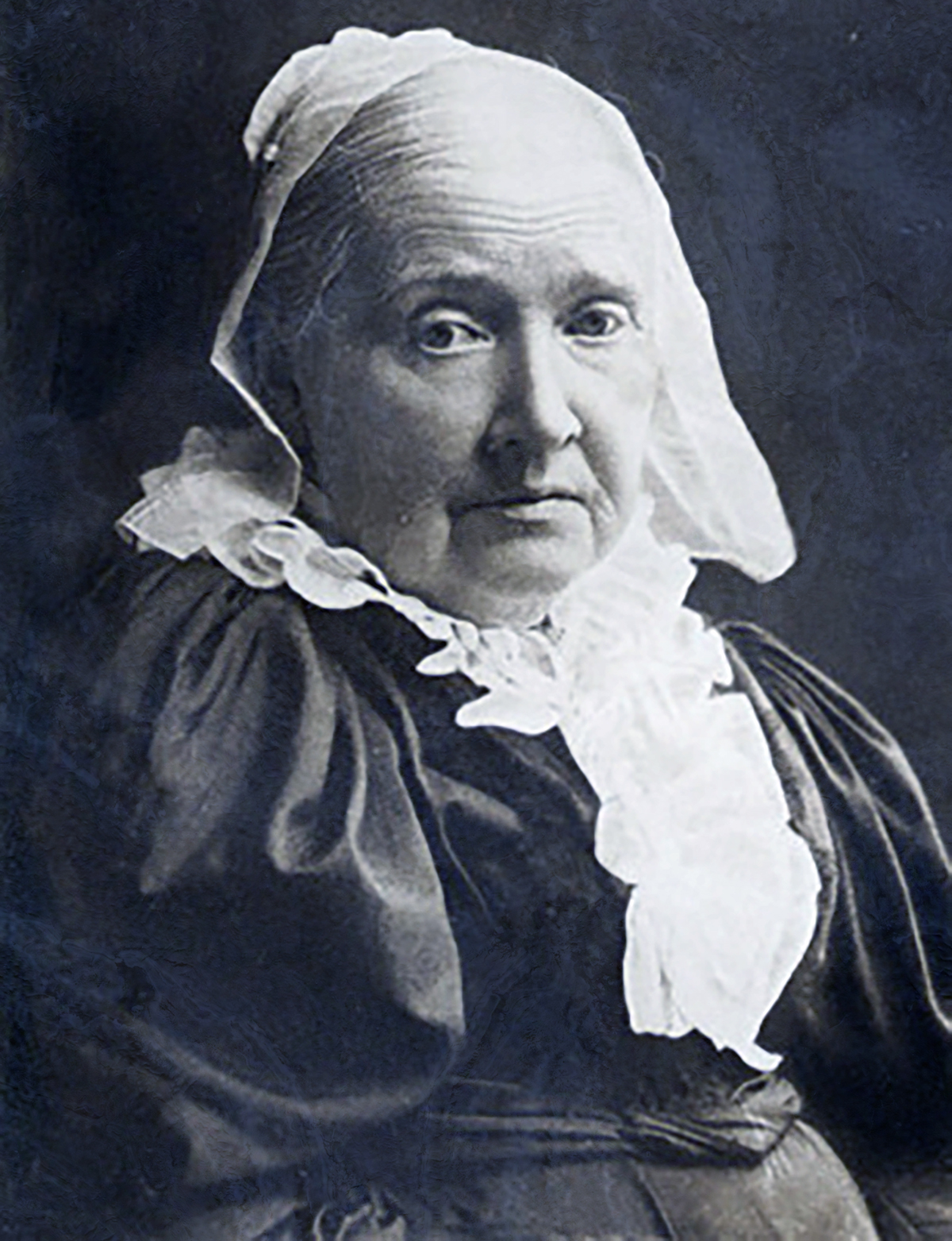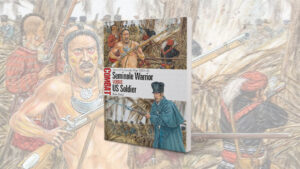Early in the Civil War, patriotic music and art played significant roles in inspiring young men on both sides to join the cause and march into battle, as well as to honor their heroes or remember their families and friends left at home. Artist Winslow Homer was particularly influential. One of his most notable Civil War illustrations was an unsigned piece titled The Songs of the War, which ran as a two-page spread in the November 23, 1861, issue of Harper’s Weekly. This impressive work combined both mediums, bringing to life some of the war’s most famous anthems: “Glory, Hallelujah,” with marching troops belting out the song’s rousing chorus; “The Girl I Left Behind,” represented by a young woman with flowing skirts waving a handkerchief; and “The Bold Soldier Boy,” in which a uniformed child leads Union soldiers into a hot fight.
Homer didn’t include captions with this piece, but because he drew his images with so much detail—for instance, the buttons and insignia on the uniforms, the rifles resting on proud shoulders, the streaming American flags and the woman’s mournful expression—no explanation was necessary.
Stirring music and words typically enjoy a long life. Of the songs Homer illustrated, three remain well known today: “Glory, Hallelujah” (which became “The Battle Hymn of the Republic”), “Dixie” and “Hail to the Chief.”
In all likelihood, what Homer called “Glory, Hallelujah” was “John Brown’s Body,” an extremely popular marching song for Union troops in 1861 due to its strong beat. Beginning in 1862, the song was given new lyrics and became known as “The Battle Hymn of the Republic,” though it retained the “Glory, Hallelujah” chorus. According to several published histories of the song, South Carolinian William Steffe probably composed the original music in the 1850s, either as a Methodist hymn or as a Southern camp meeting song. The opening line at the time was, “Say, brothers, will you meet us on Canaan’s happy shore?” followed by the familiar “Glory, Hallelujah” refrain. It was easy to sing and quickly spread beyond South Carolina.
The John Brown rendition is believed to have begun at Fort Warren in Boston Harbor, where the 2nd Massachusetts Infantry—and a private named John Brown—were stationed early in the war. The new lyrics to the old hymn were meant either to honor the abolitionist John Brown or to make fun of the soldier John Brown, perhaps both. This version began “John Brown’s body lies amouldering in the grave,” followed by the same chorus and a few other inventive verses.
Various stories exist about how the John Brown song may have become “The Battle Hymn of the Republic,” which is still sung today in churches and at various patriotic events. It is generally accepted that poet Julia Ward Howe heard Union soldiers singing the song either in an encampment or as they marched down Pennsylvania Avenue near her hotel in late 1861 and was inspired to write more suitable lyrics.
Her work appeared on the front of Atlantic Monthly’s February 1862 edition under the title “The Battle Hymn of the Republic.” The hymn was suddenly a hymn again, and the country had gained an enduring anthem.
One of the panels in “The Songs of the War” includes the words “Hail to the Chief,” but Homer’s illustration was created long before that expression denoted the official music announcing the arrival of a U.S. president (which didn’t begin officially until 1954). The tune had been around since 1812 and the British stage production of Sir Walter Scott’s The Lady and the Lake. It reached American audiences the same year through theatrical productions and sheet music. Between that period and the Civil War, the piece was associated with several presidents, including Martin Van Buren, John Tyler and James Polk, who used it for inaugurations or to announce their arrival.
In Homer’s artwork, however, it is not a president who is arriving but Maj. Gen. George B. McClellan, looking rather grand atop a prancing horse. He is tipping his hat to a Union color-guard standing at attention. Maybe Homer was poking fun at the arrogant McClellan, or maybe the band simply knew what the general wanted to hear upon his arrival.
“Dixie,” often referred to as the Confederate national anthem, has a convoluted history. It was written in 1859 by a white man from Ohio, Daniel Decatur Emmett, using what was considered a Negro dialect, for a New York minstrel show performed by white men in black face. A favorite tune of Abraham Lincoln’s, it was played during his presidential campaign and at his first inauguration. Confederate President Jefferson Davis also used it at his inauguration in 1861. During the war, both Union and Confederate troops sang it, each substituting their preferred lyrics.
Unlike the other Civil War illustrations that Homer drew for Harper’s Weekly, the “Dixie” image has no military theme. Instead, he chose to place an African-American man on top of a barrel labeled “Contraband,” while another black man trudges along in the background with a heavy sack hoisted on his shoulder. The man on the barrel appears to be whistling.
Most sources agree that Emmett composed “Dixie” while employed by the Bryant’s Minstrels group to write and sing comic songs. But he muddied even that issue by providing a dozen versions of when and how he wrote it. Some believe Emmett learned it from black musicians Lew and Ben Snowden while living in Mount Vernon, Ohio. Whatever the case, he published the song under his own name on June 21, 1860.
By then, the song had already been popularized by other minstrel shows in several major cities, though most chose to drop the dialect. In New Orleans, “Dixie” became a war song when performed by a theatrical troupe in March 1861, after Louisiana had seceded. A doctor, G.A. Kane, wrote a letter to the editor of the Richmond Dispatch in March 1893 to confirm that Emmett was the author of “Dixie.” Kane described the New Orleans show: “Night came, the Zouaves marched on, led by Miss Susan Denin, singing, ‘I Wish I Was in Dixie.’ The audience went wild with delight, [demanding] seven encores. Soon after the war broke out…the saloons, the parlors, the streets rang with the ‘Dixie’ air, and ‘Dixie’ became to the South what the ‘Marseille’ [‘La Marseillaise’] is to France.”
The Confederate lyrics, however, are different from the popular show tune. The first verse is: “Southrons, hear your Country call you, Up! Less worse than death befall you! To arms! To arms! To arms! In Dixie! Lo! All the beacon fires are lighted, Let all hearts be now united!”
In the Union version, the first verse is: “Away down South in the land of traitors, Rattlesnakes and alligators, Right away, come away, right away, come away, Where cotton is king and men are chattels, Union boys will win the battles, Right away, come away, right away, come away.”
Neither of the soldiers’ versions are well known today. It is Emmett’s song, minus the dialect, that mostly is sung now.
Civil War songs could be inspiring and invigorating, but also entertaining and, at times, comical. Their influence on soldiers and civilians alike was often as powerful as rousing speeches, sermons or editorials— and even today these songs and the artwork they inspired remain poignant legacies of our great national conflict.
Originally published in the September 2007 issue of Civil War Times. To subscribe, click here.





